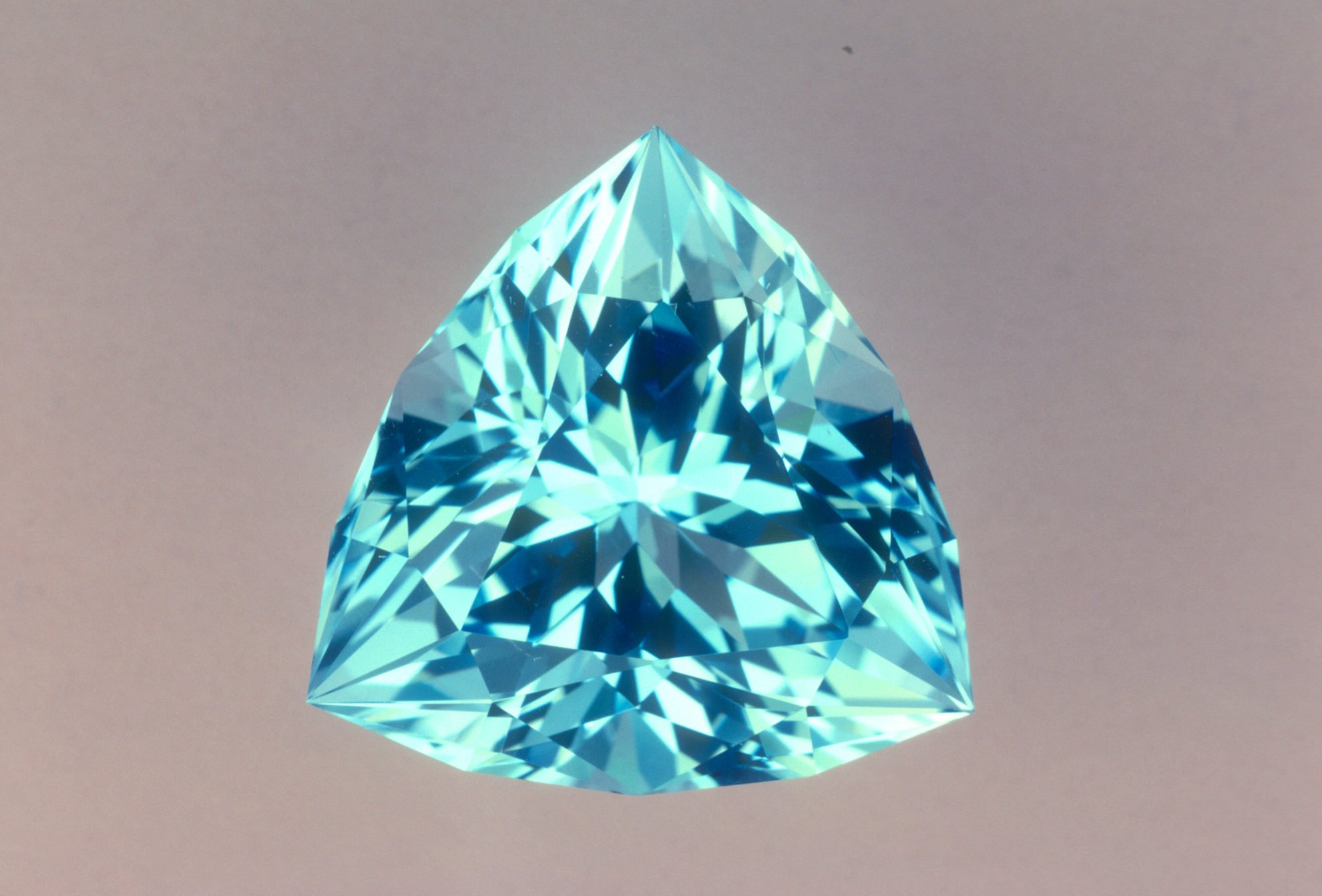What is Gemstone Luster?
Gemstone luster describes how a gem's surface looks when it reflects light. Learn the common terms gemologists use for this property and what can affect it.
2 Minute Read
Types of Gemstone Luster
In the mineral world, luster comes in two main types: non-metallic and metallic. In addition, an intermediate type, sub-metallic, is sometimes used as a description. However, the gem industry most commonly deals with the non-metallic varieties. Most gems don't meet the criteria for metallic or sub-metallic luster.
Adamantine
This term describes gems with a brilliant, mirror-like appearance, like diamonds.
Vitreous
Most gemstones, including popular jewelry species like quartz, topaz, and tourmaline, have a shiny, "glass-like" luster. In some reference works, you may encounter "glassy" as another term for this type of luster.
Pearly
Gems with this type of luster have surfaces that look like that of pearls. Some may even show iridescent colors on their surfaces, like the orient of pearls. Gypsum and charoite may show pearly luster.
Silky
Some gems, like ulexite, show fine parallel threads that look like the texture of fabric. This is known as a silky luster.
Greasy
Gems with a greasy luster seem to have a layer of oil or fat on their surface. Examples of this luster include graphite and green serpentine.
Resinous
Amber consists literally of preserved prehistoric plant resin. Therefore, it should come as no surprise that this gem material has a resinous luster. Sphalerite gems may have a resinous luster, too.
Waxy
Gems that may show this luster, like turquoise and opal, appear to have a layer of wax on their surface.
Dull
A dull luster simply means a gemstone reflects little light, such as rhodonite or kaolinite.
Metallic
Metallic luster, a reflective metal-like appearance, is a term not usually used for gemstones. Hematite, however, is a notable exception. It has a striking, metallic sheen, and gem cutters have carved cameos and made beads from this material.
The Concept of Luster in Gemology
Although luster is a basic descriptive parameter for minerals, it can vary even within a single crystal. Due to the state of aggregation of the mineral, you may see differences depending on which crystal face you examine. For example, gypsum may have vitreous luster on some crystal faces but pearly luster on surfaces parallel to the cleavage. Furthermore, if the gypsum occurred in aggregates of long fibers, it would show a silky luster. Thus, luster may not make a useful diagnostic property for identifying gypsum or other gems!
You might find the lusters of some gem species described as ranges. For example, serpentines may have resinous, pearly, or waxy lusters. Sphalerites can range from resinous to even adamantine. In addition, some gemstone lusters have "sub-types." These terms describe gems that come close to the main luster type. For example, chromite is a sub-metallic gem, while andalusite is sub-vitreous. Sub-adamantine gems include stolzite, monazite, and vanadinite.
Describing gemstone luster involves some subjectivity. This further limits its use for gem identification.
What is Polish Luster and Fracture Luster?
Gemstone luster generally refers to a gem's base appearance. However, the gem's condition may affect its luster.
A gemstone can have a polish luster (its appearance when polished) that varies greatly from its base luster. For example, polishing can transform jet, with a dull or waxy base luster, to vitreous.
A gemstone's fracture luster describes how its fractures look when they reflect light. In some species, this may vary somewhat from its base luster. For example, vitreous spinel may have sub-adamantine fracture luster.
Joel E. Arem, Ph.D., FGA
Dr. Joel E. Arem has more than 60 years of experience in the world of gems and minerals. After obtaining his Ph.D. in Mineralogy from Harvard University, he has published numerous books that are still among the most widely used references and guidebooks on crystals, gems and minerals in the world.
Co-founder and President of numerous organizations, Dr. Arem has enjoyed a lifelong career in mineralogy and gemology. He has been a Smithsonian scientist and Curator, a consultant to many well-known companies and institutions, and a prolific author and speaker. Although his main activities have been as a gem cutter and dealer, his focus has always been education. joelarem.com
Donald Clark, CSM IMG
Donald Clark, CSM founded the International Gem Society in 1998. Donald started in the gem and jewelry industry in 1976. He received his formal gemology training from the Gemological Institute of America (GIA) and the American Society of Gemcutters (ASG). The letters “CSM” after his name stood for Certified Supreme Master Gemcutter, a designation of Wykoff’s ASG which has often been referred to as the doctorate of gem cutting. The American Society of Gemcutters only had 54 people reach this level. Along with dozens of articles for leading trade magazines, Donald authored the book “Modern Faceting, the Easy Way.”
International Gem Society
Related Articles
What are Balas Rubies and Ruby Spinels?
A Guide to Gem Cutting Styles
How to Start a Gem Collection
What is Gemstone Transparency?
Latest Articles
800 Years of Mogok: A Celebration in Tenuous Times
What is the Average Gemstone Faceting Yield?
Pyroxmangite Value, Price, and Jewelry Information
How to Identify Emerald Simulants and Synthetics
Never Stop Learning
When you join the IGS community, you get trusted diamond & gemstone information when you need it.
Get Gemology Insights
Get started with the International Gem Society’s free guide to gemstone identification. Join our weekly newsletter & get a free copy of the Gem ID Checklist!
